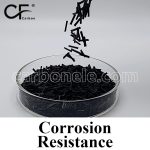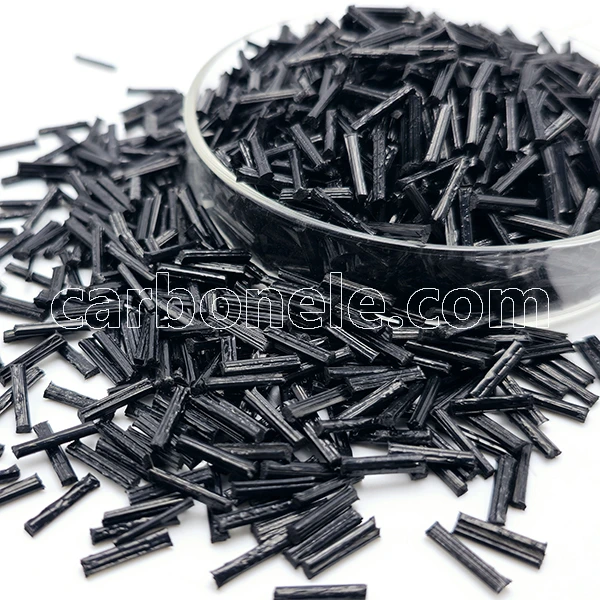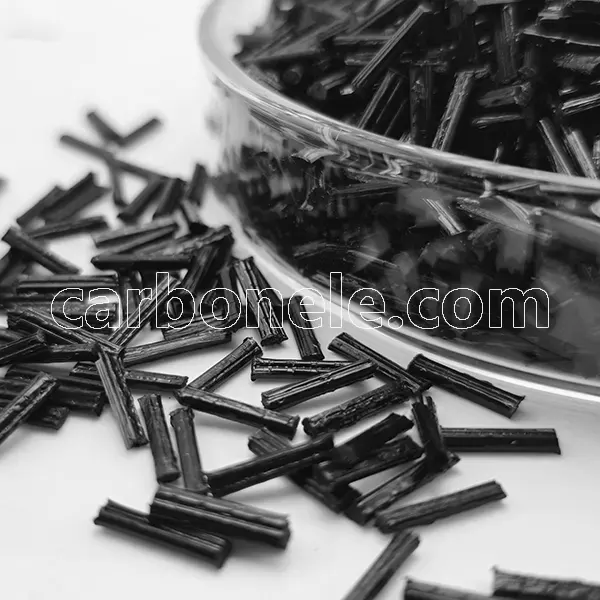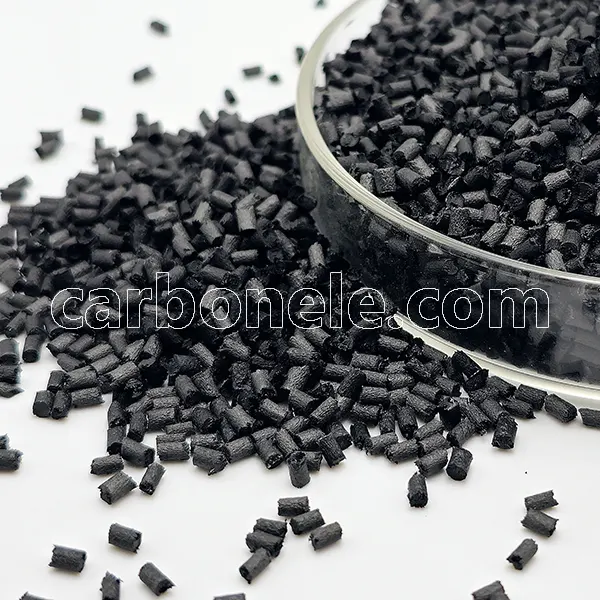Different Between PA66-CF10 And PA66-LCF10 - Carbon Fiber Compounds Manufacturer | Supplier
PA66-CF10 and PA66-LCF10 are both nylon 66 materials reinforced with 10% carbon fiber, but they differ in fiber type. PA66-CF10 contains short carbon fibers, offering good strength, stiffness, and ease of molding. PA66-LCF10 uses long carbon fibers, providing higher mechanical strength, better impact and fatigue resistance, and improved dimensional stability. However, it requires more advanced processing and typically has a rougher surface. PA66-CF10 is better for general applications, while PA66-LCF10 suits high-performance, load bearing parts.
In Depth Comparison of PA66-CF10 and PA66-LCF10: Material Behavior, Performance, and Application Considerations
Polyamide 66 (PA66) is widely used in engineering applications due to its excellent mechanical, thermal, and chemical resistance properties. To enhance its performance further—particularly in terms of stiffness, strength, and dimensional stability—PA66 is commonly reinforced with carbon fibers.
Two such materials are PA66-CF10 and PA66-LCF10, both reinforced with 10% carbon fiber by weight. However, they differ significantly in the form of carbon fiber used: PA66-CF10 uses short carbon fibers, while PA66-LCF10 uses long carbon fibers.
This article offers a detailed comparison of the two, focusing on their mechanical behavior, processing characteristics, and suitable applications.
1. What Are PA66-CF10 and PA66-LCF10?
PA66-CF10: PA66 reinforced with 10% short carbon fibers, typically around 100–300 microns in length.
PA66-LCF10: PA66 reinforced with 10% long carbon fibers, which can span several millimeters and maintain more continuous reinforcement throughout the matrix.
Though both have the same fiber content by weight, fiber length greatly impacts the mechanical and structural behavior of the final material.
2. Key Property Comparison
| Property | PA66-CF10 | PA66-LCF10 |
|---|---|---|
| Fiber Type | Short chopped carbon fibers | Long carbon fibers (often >3 mm) |
| Tensile Strength | Good (30–50% better than neat PA66) | Higher due to continuous load transfer |
| Flexural Strength | Improved over unfilled PA66 | Significantly higher |
| Stiffness (Modulus) | High | Very high |
| Impact Resistance | Slightly reduced vs. neat PA66 | Improved compared to CF10; long fibers absorb more energy |
| Fatigue Resistance | Moderate | Excellent |
| Thermal Stability | Moderate improvement | Comparable, slightly better heat dissipation |
| Dimensional Stability | Improved | Excellent – long fibers reduce warpage |
| Shrinkage | Low | Very low |
3. Mechanical Performance Insights
PA66-CF10 provides an even distribution of short fibers throughout the polymer, enhancing stiffness and strength but creating stress concentration points that may reduce impact toughness.
PA66-LCF10, with its long carbon fibers, allows continuous load transfer, meaning the material can absorb and distribute forces more efficiently. This results in better fatigue resistance, higher load bearing capacity, and more stable mechanical performance over time.
4. Processing and Manufacturing Differences
| Processing Feature | PA66-CF10 | PA66-LCF10 |
|---|---|---|
| Moldability | Easy to mold | Requires specialized equipment (LFT molding) |
| Flowability | Good | Lower – long fibers restrict flow |
| Tooling Wear | Moderate | Higher due to longer abrasive fibers |
| Cycle Time | Moderate | Longer cycle times |
| Fiber Breakage Risk | Already chopped (no impact) | High during molding – careful processing needed |
Note: PA66-LCF10 typically uses long fiber thermoplastic (LFT) molding technology, such as LFT-D (direct) or LFT-G (granules). Standard injection molding machines may cause fiber breakage, which reduces performance benefits.
5. Surface Finish and Aesthetic Considerations
PA66-CF10 offers a better surface finish, making it suitable for visible or aesthetic parts.
PA66-LCF10 can result in fiber exposure and rougher surfaces, especially if processing is not optimized. Post processing may be needed.
6. Application Suitability
PA66-CF10 is ideal for:
Automotive interior trim and moderate structural brackets
Housings and enclosures for electronics or machinery
Applications needing good balance of stiffness, cost, and appearance
PA66-LCF10 is ideal for:
Load bearing components such as supports, structural beams, and frames
Automotive parts subjected to high mechanical fatigue
Lightweighting projects replacing metal (without compromising strength)
Mechanical levers, pulleys, and gear housings requiring long term durability
7. Cost and Value Considerations
PA66-CF10 is more cost effective and easier to process using standard equipment.
PA66-LCF10 is more expensive due to:
Specialized molding requirements
Higher tooling wear
Higher raw material cost
But it delivers better mechanical performance, especially in fatigue critical or structural applications, potentially reducing the need for reinforcements or metal.
8. Summary: Which Should You Choose?
| Design Requirement | Recommended Grade |
|---|---|
| Easy molding with standard machines | PA66-CF10 |
| Superior strength and stiffness | PA66-LCF10 |
| Better impact and fatigue resistance | PA66-LCF10 |
| Smoother surface finish | PA66-CF10 |
| Cost sensitive projects | PA66-CF10 |
| Lightweight structural metal replacement | PA66-LCF10 |
| High dimensional stability under long term load | PA66-LCF10 |
9. Conclusion
While both PA66-CF10 and PA66-LCF10 are carbon fiber reinforced Nylon 66 materials with the same reinforcement percentage, their performance and processing characteristics differ greatly due to fiber length.
Choose PA66-CF10 when you need good mechanical performance with easy processing and lower cost.
Opt for PA66-LCF10 when your application demands higher strength, fatigue resistance, and long term dimensional stability, even at the cost of more complex molding and higher price.
For design teams working on structural or lightweight applications, LCF versions are often worth the investment.
If you want to get more information about PA66-CF or PA66-LCF, you can vist our Youtube.
Previous News
Different Between PA66-CF10 and PA66-CF30Next News
Different Between PPS-CF10 and PA6-CF10
Feature Product
-
PA12 LCF30 for Drone Fuselages & Wings
What do you know about PA12 LCF30? PA12 ...
-
Competitive Price PA6 LCF30 Composites
What’s it? PA6 LCF30, which stands...
-
ABS CF10 Compound ABS 10%CF Thermoplastic Compo...
What’s ABS CF10? ABS CF10 refers t...









